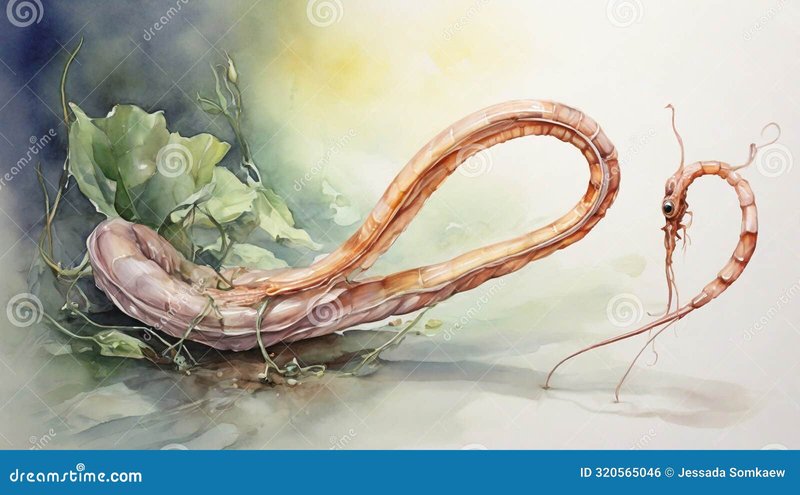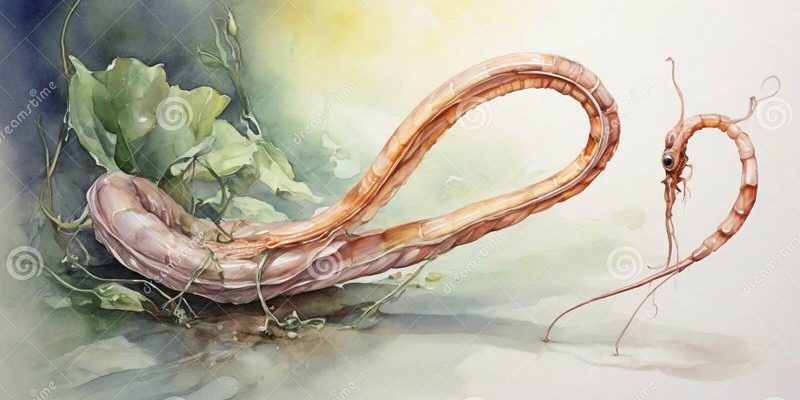
Ribbon worms belong to the group called Nemerteans, and they are often found in marine environments. Their body structure is quite different from what we might expect. You could say they’re the ninjas of the animal kingdom, using their flexibility to their advantage as they sneak around looking for food. So, how exactly do ribbon worms move? Let’s dive into their world and unravel the mysteries behind their gliding and stretching motions.
Understanding Ribbon Worm Anatomy
To appreciate how ribbon worms move, it helps to know a bit about their anatomy. These worms can grow quite long, with some species reaching lengths of up to 30 meters! But despite their length, they are incredibly thin and have a soft, gelatinous body. This unique structure is crucial for their movement.
Their body consists of three main layers: the outer epidermis, a middle layer of muscle, and an inner layer known as the coelom. The muscles are especially important; ribbon worms have circular and longitudinal muscles that allow them to contract and expand their bodies. It’s like pulling and pushing a rubber band—this ability to manipulate their shape is what enables them to glide gracefully.
You might be wondering how this works in practice. As they contract their muscles, their bodies become shorter yet thicker, which helps them push against their surroundings. When they relax those muscles, they can stretch out, making them longer and thinner. This combination of muscular movement allows for fluid, snake-like motions as they glide through water or along surfaces.
How Ribbon Worms Glide Through Water
Gliding is one of the key ways ribbon worms move, especially in aquatic environments. Their slender bodies help reduce friction as they swim through water. Think of them like an arrow cutting through the air—smooth, sleek, and fast.
When a ribbon worm wants to glide, it uses its long, muscular body to create waves. By contracting its muscles in a coordinated manner, it creates a sort of ripple effect that propels it forward. This method of movement is similar to how an undulating snake moves across the ground.
Many ribbon worms also have a small foot-like structure on their underside called the ciliated epidermis. This helps them get a better grip on surfaces while also aiding in swimming. The tiny hair-like structures, or cilia, create currents in the water, allowing the worm to navigate and change direction effortlessly.
You might see them gliding in shallow waters, with their bodies gracefully undulating as they search for small prey like crustaceans. Honestly, it’s like watching a delicate dance beneath the waves!
Stretching Techniques: More Than Just Length
Stretching is another fascinating aspect of ribbon worm movement. These worms don’t just glide; they can elongate and compress their bodies to reach food or escape from predators. This capability gives them an edge in their natural habitat.
When they encounter food, ribbon worms can extend their bodies to grasp it. They have a specialized feeding structure called a proboscis, which can shoot out to capture prey. Think of it as a hidden, stretchy arm that can surprise unsuspecting meals! When they need to move quickly or evade danger, these worms can pull themselves into a tight coil, allowing them to hide or make a quick getaway.
Their ability to stretch also makes them resilient. If a predator takes a bite, they can sometimes detach part of their body, allowing them to escape while the lost section regrows. This survival tactic showcases their incredible adaptability and the importance of their unique body structure in motion.
The Role of the Environment in Movement
The environment where ribbon worms live plays a big role in how they move. They thrive in various habitats, from sandy ocean floors to rocky tidal zones. Their movement styles need to adapt to these different settings. In sand, for example, they may burrow and wiggle, using their body to create space in the soft substrate.
In more turbulent waters or rocky environments, their gliding abilities really shine. They can quickly navigate through crevices and around obstacles. Their flexible bodies allow them to squeeze into tight places, which is essential for both hunting and avoiding larger predators.
You might find them in estuaries, where fresh and saltwater mix, giving them a unique set of challenges to overcome. Here, their ability to glide smoothly and stretch out helps them navigate the constantly shifting landscape.
Comparison with Other Marine Animals
When you look at ribbon worms, it’s interesting to compare their movement with other marine creatures. For instance, compare them to octopuses. Both use flexibility and unique body movements, but ribbon worms rely on muscle contractions while octopuses combine muscle movements with jet propulsion.
Another interesting comparison is with eel-like fish. Like ribbon worms, these fish have long bodies and can twist and turn through water. However, eels have a skeleton and fins, which give them a different way of moving. Ribbon worms, on the other hand, have no bones, which allows them greater flexibility and a unique style of gliding.
If you think about it, all of these animals have adapted to their environments in ways that suit their needs. Ribbon worms may not be as flashy as some of their counterparts, but their gliding and stretching techniques are perfectly suited for survival in their watery homes.
The Importance of Movement for Survival
Movement is crucial for ribbon worms, not just as a means of transportation but for their survival. Their gliding and stretching allow them to hunt efficiently, evade predators, and navigate through varied environments.
By gliding, they can cover more ground to find food, while their stretching capabilities help them reach prey that might otherwise be out of grasp. This adaptability makes them effective predators, even in challenging environments.
Additionally, their unique movement plays a role in reproduction. During the mating season, ribbon worms can stretch to attract mates. This flexibility can also help them in laying eggs in suitable locations, ensuring the next generation has a better chance of thriving.
In the grand scheme of ocean life, ribbon worm movement is a testament to the variety of adaptations found in nature. Each creature has its own way of getting around, and ribbon worms remind us that even the simplest movements can be finely tuned for survival.
In summary, ribbon worms are truly remarkable creatures. Their ability to glide and stretch makes them unique among marine animals. With their soft bodies and specialized muscles, they navigate their environment with grace and efficiency.
Whether they’re gliding through the water or stretching to capture prey, ribbon worms remind us of the beauty of adaptation in the animal kingdom. So next time you’re near the ocean, take a moment to appreciate the hidden wonders of the water—like the incredible movement of ribbon worms that often go unnoticed but play a vital role in their ecosystem.
Understanding how these resilient creatures move not only gives us insight into their lives but also highlights the intricate web of life in our oceans. So, keep an eye out for these fascinating animals; there’s more to them than meets the eye!

